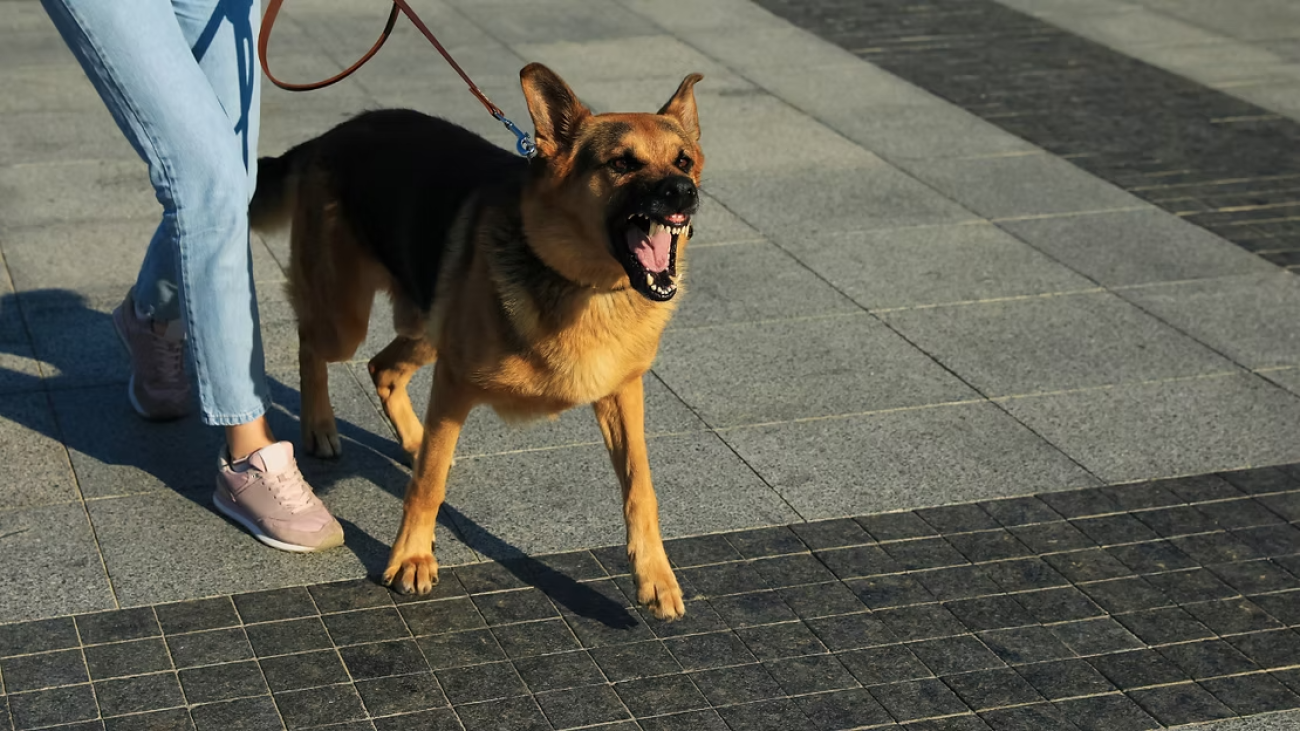Hey there! If you’ve ever been at your wit’s end over your dog’s aggressive behavior, you’re not alone. Dealing with growling, snapping, or biting is tough, but there’s a silver lining. What if we told you that understanding the roots of this behavior could change the game? Just like humans, dogs often react aggressively not out of a desire to be hostile, but because they’re feeling threatened or overwhelmed.
The Essence of Canine Aggression
Aggression in dogs, much like in humans, can often be a sign of underlying issues such as fear, anxiety, or pain. By drawing parallels to human behavior—think about how some of us might shout or slam doors when stressed—we can begin to understand that our furry friends might be expressing similar distress in their own way.
Factors Influencing Aggressive Behavior in Dogs
Several factors can predispose a dog to behave aggressively. Genetics, early life experiences, and even ongoing environmental factors play a crucial role. Like humans, dogs who have had less social interaction or negative experiences in their formative years may be more reactive or sensitive to certain triggers.
Can We Really "Train" Aggression Out of Dogs?
The concept isn’t about erasing this behavior but understanding and regulating emotions more effectively. Here’s how we can approach it:
Seek Professional Guidance: It’s essential to work with a professional dog trainer who specializes in reactivity and aggression or a veterinary behaviorist. These experts are crucial for accurately identifying what triggers your dog’s aggression and devising tailored strategies that address these specific issues.
Emotional Coregulation and Establishing a Secure Base: Establishing yourself as a secure base is critical for reactive dogs. Your consistent, calm presence can help your dog learn to manage their emotions more effectively. This connection is about more than obedience—it’s about building a bond that communicates safety, allowing your dog to explore and interact with their environment without fear. This approach is similar to how a parent provides security and comfort to a child, helping them develop confidence and emotional resilience.
Understanding Triggers and Controlled Exposure: Controlled exposure involves gradually introducing your dog to their triggers in a secure, managed setting. This method is similar to exposure therapy for humans and can be highly effective in reducing anxiety and aggression. By slowly and safely exposing your dog to these stressors while maintaining a calm and supportive presence, you help them learn to cope in healthier ways.
Managing the Environment: Proactively adjusting your dog’s surroundings can prevent situations that trigger aggressive behavior. This could mean avoiding certain stimuli or creating a more structured environment that helps mitigate unpredictable reactions.
Health Checks: Regular health evaluations are crucial since physical discomfort or medical issues can exacerbate behavioral problems. Ensuring your dog is healthy helps eliminate pain as a potential cause of aggression.
Keeping It Real
Managing aggression in dogs isn’t about achieving perfection but is more about continuous improvement and understanding. To put this into a human perspective, consider how someone might react if startled unexpectedly—like if a car backfires nearby. The natural response might be to shout or jump. For some, especially those with a traumatic background related to loud noises, the reaction might be even more pronounced, such as screaming or becoming defensive.
Similarly, your dog’s aggressive behavior can be triggered by experiences that might seem benign to you but are perceived as threats by them. Just as a person might need reassurance after being startled, dogs benefit from having a reassuring, consistent presence in their lives. When you react to your dog’s aggression with calmness and understanding, rather than punishment or anxiety, you help them feel safer. It’s about showing them that they don’t need to resort to aggression to protect themselves because you are there to help them manage their fears.
In this way, your relationship with your dog becomes a secure foundation from which they can learn to navigate their world without aggression. Each instance where they might normally react with aggression is an opportunity for you to teach them there are other ways to handle their feelings, much like someone might learn to take deep breaths or seek reassurance after being startled. This process of understanding and adjusting to manage stress responses is key, reflecting the ongoing efforts we all make in managing our emotional reactions in daily life.
Wrap-Up
Consider your own reactions under stress—like snapping at someone during a stressful day or feeling overwhelmed by noise. Our dogs aren’t so different when they find themselves lashing out. With patience, understanding, and the right strategies, we can help them feel safer and behave more appropriately. It’s all about growing together and deepening our empathy for our canine companions.
Cheers to fostering compassion and understanding, both towards ourselves and our four-legged friends. Ashley Emig CPDT-KA


